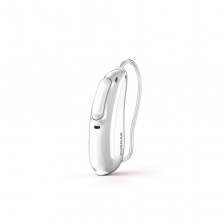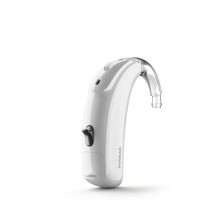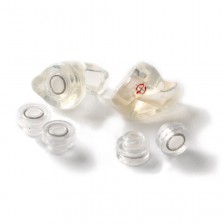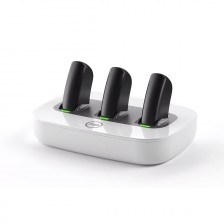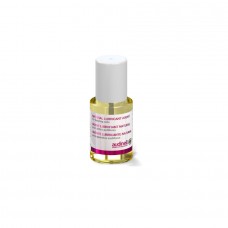Ear Fungi: Causes and Treatments


Otomycosis is a problem that usually affects the outer ear and must be cured as soon as possible. This type of condition is also called swimmer's ear fungus or otitis. It is mainly a skin infection that affects the outer ear canal and occurs due to the appearance of fungus in the ear. Below we explain the causes, symptoms and the groups most at risk of contracting the disease.
What causes fungus in the ear?
Fungi in the ear are the consequence of the proliferation of some yeasts and filamentous fungi, mainly those of the Candida albicans type, in the case of yeasts, and of the Aspergillus niger type, in the case of fungi.
When the yeasts and fungi present in the ear find a favourable environment for their proliferation, such as a wound, an excess of heat or humidity, their number increases. If the process is not stopped in time, it will cause discomfort and even infections.
Due to its fungal origin, otomycosis is more common in tropical areas or hot climates, as it is where the most favourable conditions for the appearance and growth of fungi occur. One of the names most commonly associated with otomycosis, swimmer's ear, gives us a clue as to what is one of the main origins of this ailment, which is none other than water: fungi need moisture and heat to grow, and therefore a swimming pool in the middle of summer is undoubtedly one of the places most at risk. Clarify, but, that this is not its only possible origin. The appearance of these annoying fungi in the ears can also occur due to excessive cleaning of the earwax or by the appearance / introduction of foreign bodies in the ear.

If swimming in clean or even treated water already poses a risk, it goes without saying that doing so in dirty or polluted water multiplies that factor in a worrying way, this being one of the first precautions we recommend taking, making sure that the water is as clean as possible before taking a dip. It is also very important to take into account one's medical or self-injury history: people with a weakened immune system, previous ear injuries (such as eczema or chronic epidermal problems) or even people with diabetes mellitus are more likely to suffer from otomycosis.
Symptoms of ear fungus
The symptoms associated with fungus in the ears include itching and stinging, a red ear (especially on the outside of the ear canal) and, in some cases, the secretion of a thick liquid that is usually yellow, although sometimes it can also be white or black. At other times, the otomycosis can cause a sensation of having the ear plugged, which in turn can lead to hearing problems.
These are some of the most common symptoms of ear fungus. If you notice that you have one, go to an otologist to be examined and recommend a treatment. They may be given separately or together.
- Itching in the ear canal
- Pain in the ear canal
- Hearing loss
- Increased cerumen secretion
- Inflammation
- Discharge of pus
- Whitish plates at the entrance to the ear canal
- Peeling
Risk groups for ear fungus
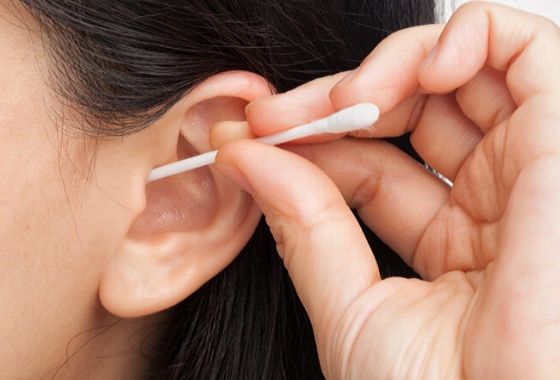
Otomycosis or fungus in the ear can affect anyone. For example, the rubbing of hearing aids or the incorrect use of swabs can hurt or irritate the external part of the ear canal and favor its appearance. However, given the most favourable conditions for their proliferation, there are some groups that are particularly vulnerable.
Children are at greater risk of contracting fungus because of their propensity to put objects in the ear and because of water games when they bathe or enjoy their holidays. Swimmers and divers are also at constant risk from constant contact with water. Another group to include are people who work in hot environments, by sweating and high temperatures that reach the ears.
Treatment for ear fungus
In order to treat this infection the first and most indispensable thing, besides visiting a medical specialist, is to clean the affected ear or ears properly. In an optimal case, this cleaning may be enough to remove the fungus from the ear, although this is not always the case. Thus, it may be necessary to apply antifungal drops or even antibiotics, depending on the degree of infection.
It is also important to note that if the person suffering from otomycosis is using a hearing aid, he or she must momentarily stop using it until the disease is completely cured. And as we always say, if in spite of this information you want to be sure and you want to consult us personally, contact us without hesitation, because we will be delighted to help you.
Keeping your ears dry, proper cleaning and constant control will prevent fungus from causing damage. If you have any of the symptoms described above, go to your nearest Claso centre. We will carry out a check-up and explain to you what measures to take.


